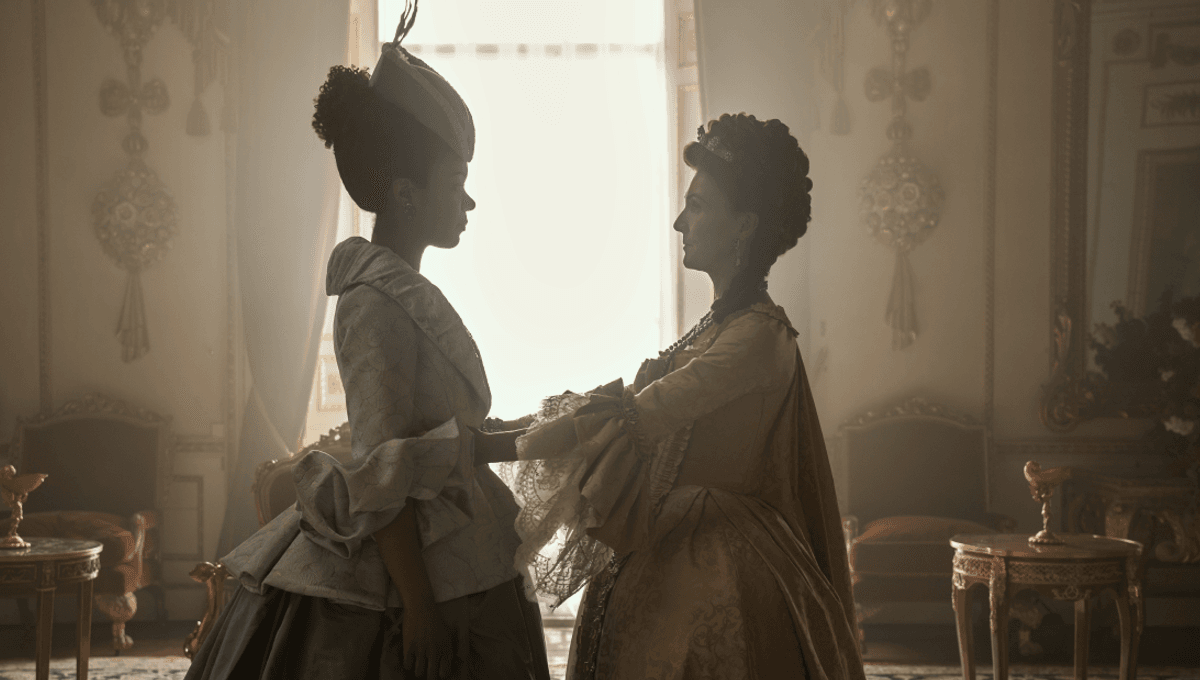
Queen Charlotte: A Bridgerton Story recently began streaming on Netflix and tells a fictional tale based on a real person who some believe may have been the first Black Queen of England. There is much debate around the queen’s ancestry, with some theories stating she was a direct descendent of a Black branch of the Portuguese royal house, while others say the connection is too far removed to be significant.
The would-be monarch arrived in England aged 17 to become the wife of George III – better known to some as the “mad” King. From a small northern German duchy in the Holy Roman Empire, she was born and raised at Untere Schloss (Lower Castle) in Mirow and later considered a fine match for the unmarried 22-year-old George.
Historian Mario de Valdes y Cocom has historically been one of the leading voices in the debate, arguing that royal portraits painted of Queen Charlotte depict African features that were noted by numerous contemporaries, writes Stuart Jeffries for The Guardian. It was his understanding that the Queen, though raised in Germany, descended from a Black branch of the Portuguese royal family connected to the 15th-century noblewoman Margarita de Castro e Souza.
One portrait in particular has stood out amidst the debate, crafted by Scottish painter Allan Ramsay in 1762 depicting Queen Charlotte in her coronation robes. It’s Valdes’s outlook that the painters of this time may have erased traits that sat outside of the Eurocentric ideal of beauty, and that Ramsay may have been a rare exception in depicting the Queen as she was rather than how others might have preferred to see her. Furthermore, all kinds of toxic concoctions have been used throughout history to alter the face of women so that they better blend in with the fashions of the time (hopefully the lead powder trend won’t come back around).
“Artists of that period were expected to play down, soften or even obliterate undesirable features in a subject’s face. [But] Sir Allan Ramsay was the artist responsible for the majority of the paintings of the queen, and his representations of her were the most decidedly African of all her portraits.”
Ramsay, like Queen Charlotte, campaigned for the abolition of slavery and so it could stand to reason that his refusal to erase the Queen’s African features was an act of defiance against racism. However, the validity of Valdes’s interpretation is itself up for debate as other art historians aren’t able to see Black ancestry reflected in her features.
They argue that her proposed Black ancestry was likely too far removed to have altered her appearance in a way that could be accurately detected from paintings. Furthermore, viewing the images through the lens of modern conceptions of race may be a stretch in trying to confirm or deny with any degree of confidence.
It seems that unless further evidence is uncovered, there are no firm conclusions to be drawn on the “the first Black Queen of England”, but it’s an idea the Netflix series has run with as – to use the words of narrator Julie Andrews – “It is fiction inspired by fact.”
The series also touches on some other aspects of the Queen’s complex life, some verified, others more ambiguous. They include her difficult transition to life in the UK, her involvement with the world-famous composer Mozart, and her care for the King who experienced multiple and lasting bouts of mental illness throughout their marriage.
Source Link: Was Bridgerton's Queen Charlotte Britain's First Black Queen?